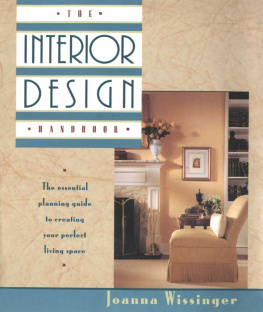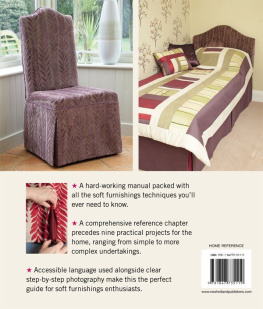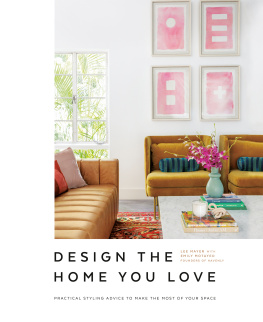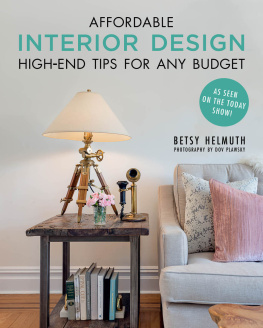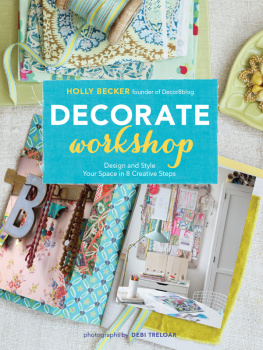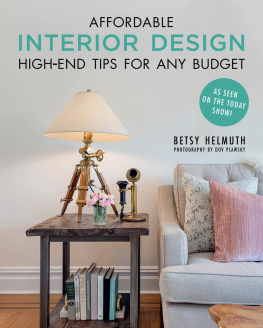Copyright 2009 Filipacchi Publishing, a division of Hachette Filipacchi Media U.S., Inc.
PointClickHome.com is a registered trademark of Hachette Filipacchi Media U.S., Inc.
All rights reserved. No part of this book may be reproduced or transmitted in any form or by any means, electronic or mechanical, including photocopying, recording, or by any information storage and retrieval system, without permission in writing from the publisher.
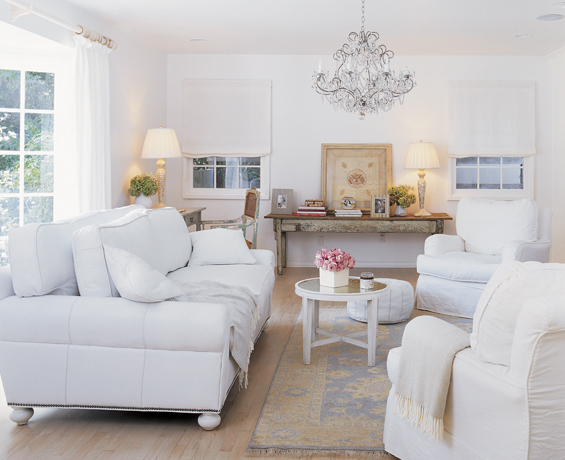
Of all the investments youll ever make, none is more important than your home. Whether you want to keep your house or sell it, finishing it out and furnishing it in a way that makes the most of its potential is the key to improving the value of your investmentand to extracting its full worth when its time to sell. Either way, the possibilities for enhancing the character, function and beauty of your hometo support your own lifestyle or to enable potential buyers to see how it might bolster theirsare vast. And this book is designed to help you sort through the options.
With many homeowners still reeling from the aftershocks of the recent mortgage crisis and concerned about inflation and a volatile economy in the future, now is the ideal time to put forth a little extra energy to protect and enhance the value of your homewhether you plan to continue to live in it, are determined to sell it this month, or want to enhance its resale value for 10 or 20 years from now. Improving certain parts of your home may demand applying substantial elbow grease or parting with a good chunk of your wallet. But the real or perceived value of other areas can often be improved with minimal effortand without spending a cent.
Clearly organized, filled with photos of inspiring rooms and brimming with expert tips, this book shows you how to look at your home from the inside out, recognize its strengths and weaknesses, and learn how to bring out its best. Youll find expert advice on choosing or improving the surfaces of your walls, windows, ceilings and floors, as well as tips on selecting and arranging furniture to enhance the configuration of your rooms, and with it, the quality of your life. Youll also discover how to refresh and recycle existing furnishings and add function and comfort with soft furnishings such as curtains, shades, bedding and slipcovers. Plus, youll get practical ideas and helpful hints on controlling clutter, brightening rooms with color and light, and enhancing outdoor spaces.
Best of all, the ideas presented here can be implemented in an hour, an afternoon or over several years, depending on your timeframe and your goals. And, like some of the best things in life, many of them cost very littleor are even free.
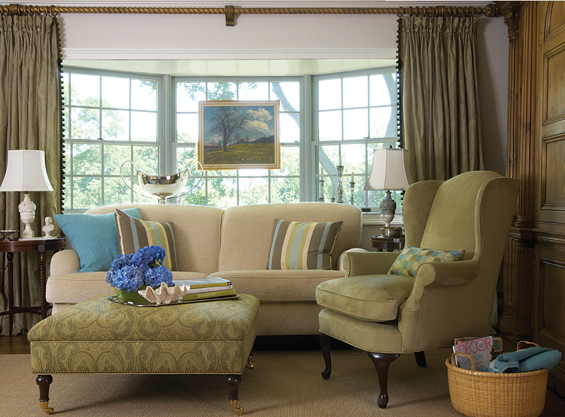
Contemporary fabrics and accents in lively colors and patterns update a collection of traditional furnishings with a subtle, fresh twist.
An ideal home invariably means different things to different people. But the most appealing houseswhether compact country cottages or grand manorsalways possess a clear sense of style. For some people, infusing a home with individual style comes as naturally as breathing. For others, sifting through a dizzying array of paints, fabrics, furnishings and fixtures can overwhelm their attempts to find their own visual voice.
Yet, in any endeavor to improve the quality of a houseparticularly one you plan to keepits vital to home in on a visual style that not only reflects the essence of who you are but also brings out the best in the houses natural character. If you want to sell your home, clarifying its style also helps a prospective buyer see it with a cohesive view, enabling him or her to easily picture living, working, eating and sleeping in its rooms or relaxing in its yard.
To help you distill a visual point of view for your home, this chapter presents a range of interior settings, which are divided into sections depicting several general style categories and highlighting furnishings and accents that support and reflect different approaches to living. Whether you are a dyed-in-the wool traditionalist or a committed modernist, a country girl or a dreamy romantic, designing a home to live in is about surrounding yourself with furnishings, colors, accents and art that make you happy. Its about knowing your likes and dislikes, starting with an essential foundation of furnishings, then layering in pieces over time to create an environment that reinforces your values and how you want to live.
Staging a home to sell, on the other hand, is more about putting its best face forward. To do this, you may need to edit some of your furnishings or accentsparing away highly personal pieces or those acquired willy-nilly over timeto allow a future owner to see a rooms potential. In this case, developing a clear style should be more about presenting an essential template of furnishings that can enable other people to envision how they might imprint a house with their personal stamp and make it their own.
The rooms in one section may resonate with you immediately, while spaces in another might appeal to your spouse. Or you may see room settings and ideas in two or three sections that appeal to you or other family members. The trick is to look for the dominant themes that rise to the top and, particularly if you plan to stay in your home, balance the dreams of everyone who shares the house. When cultivating a style, its also important to consider the innate character of your home and its context. You can no sooner transform a rustic cottage into a manor house by filling it with expensive antiques than you can turn a sleek urban apartment into a mountain retreat by peppering it with lodge paraphernalia. (Often, though, seasoned designers and people with a sure sense of style mix and match furnishings and accents of different styles and eras to keep traditional settings from feeling staid or contemporary spaces from feeling arid.) Instead, think about how you can nurture your houses inherent possibilities, while acceptingyet minimizingits limitations.
Its also worthwhile to remember that improving the value of your home is not so much a goal as it is a process, especially if you plan to stay in it awhile. When you think of your home as malleable, like a stage, youll adapt and change it thoughtfully, with an eye toward the big picture. Will you be staying put for the long haul? Or do you plan to be moving out soon? Thinking of your home as something that can constantly be added to or subtracted from can also help you manage your budget. For as any savvy clothing shopper knows, you dont necessarily have to spend a lot of money to create great style. In fact, some seasoned pros often see an inverse proportion between style and money. Keeping in mind your long- and short-term objectives will help you clarify how to allocate your time and dollars in order to make the most of your investment.
Before you begin to change any room, take the following quiz to see which style emerges as a reflection of your lifestyle preferences. Then turn to the section or sections whose spaces most closely align with your dominant style type and let the images and ideas guide your decorating choices.



